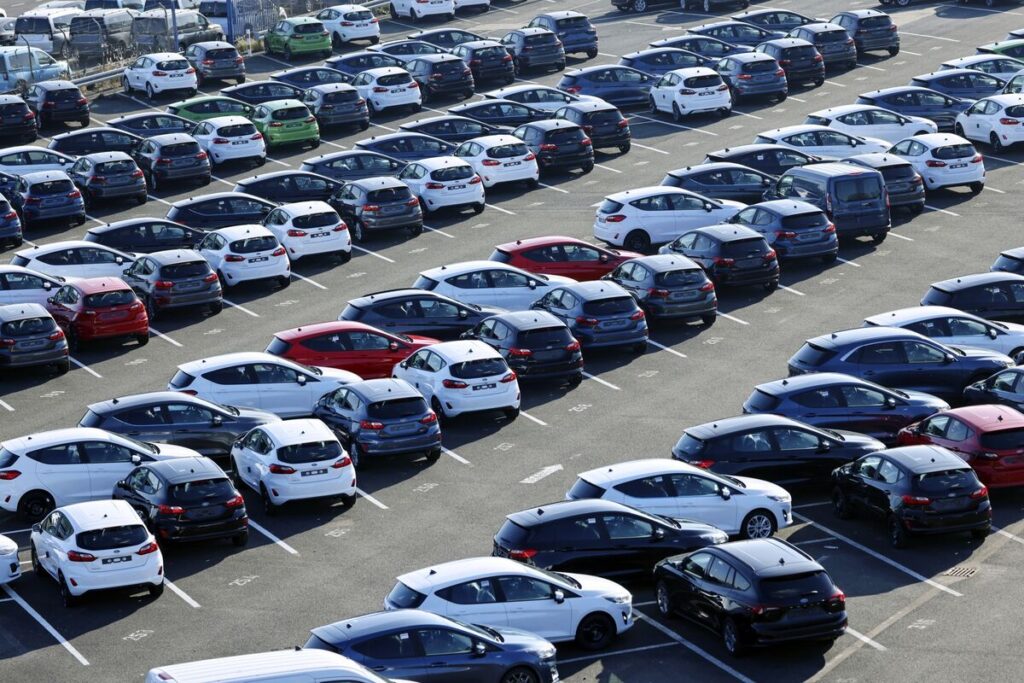The cost of owning a car in the US experienced a sharp increase following the disruption caused by Covid, leading to assembly line shutdowns and a scarcity of crucial semiconductors. Subsequently, the Federal Reserve swiftly raised interest rates to combat inflation, resulting in higher costs for car loans. Consequently, by December, the average sticker price for a new car in the US reached $48,759, almost 30% higher than in January 2019, translating to a near-record $770 monthly payment over time, as reported by Cox Automotive.
1. How have US car prices changed?
Before the pandemic, over a decade of balanced supply and demand, coupled with super-low interest rates, maintained an average monthly payment of around $400. However, by December 2022, nearly two years into the Covid pandemic, this figure nearly doubled, setting a record at $788 a month. Although new car prices have slightly decreased from a peak of over $50,000, elevated interest rates since the Federal Reserve’s actions in March 2022 have kept monthly payments high. Used car prices are also affected, with an average monthly bill of $561 in November, up 37% from $410 in late 2019. The overall cost of owning and operating a new car in 2023 rose to $12,182, or $1,015 monthly, a 14% increase from $10,728, or $894, in 2022. Despite high prices, new-vehicle sales increased by 13% in December compared to the previous year, reaching 1.4 million vehicles.
2. Why have car prices risen?
While car prices have slightly declined from their peak, increased loan interest rates have offset much of this reduction. The average rate for a new car is approximately 9.6%, up from 5.5% in late 2019, and for used vehicles, it is 14.3%, compared to 8.2% in late 2019. This surge in interest rates has led to financial challenges for many Americans, with a notable increase in subprime auto borrowers at least 60 days past due on their loans. Furthermore, a significant number of car owners find themselves underwater on their loans, indicating that the market value of their cars has decreased faster than the loan payoff rate.
3. Is the auto supply chain back to normal?
While the supply chain disruptions and semiconductor shortages that impacted car manufacturing have subsided, automakers have been slow to replenish their inventories. In December, dealers held about 70 days’ worth of inventory, close to the historical average, prompting incentives equivalent to a 5% discount from sticker prices. However, the substantial price hikes by automakers over the past few years mean that cars are still, on average, about $10,000 costlier than they were in 2019.
4. What about used cars?
The pandemic caused disruptions in the supply and demand dynamics of the used car market. The supply of used cars plummeted as fewer people purchased new cars and traded in their old ones, while increased demand resulted from consumers with government stimulus checks. Although prices have decreased from their peak, challenges persist, such as disruptions in parts production due to the United Auto Workers strike. The average used car price at the end of November was $26,091, down $1,065 from a year earlier but still $6,000 more than at the end of 2019.
5.What’s going on with electric vehicles?
Americans remain cautious about electric vehicles (EVs) due to their high prices. EV batteries are more expensive than internal combustion engines, leading consumers to pay more for eco-friendly cars. Although EV prices have slightly decreased, the average cost is still around $51,000, approximately $3,000 more than internal combustion vehicles. Limited variety is another challenge, with only the Nissan Leaf selling for less than $40,000 in the US. Electric vehicles are accumulating in lots, with inventories at US dealers reaching a new high of 130 days in December.
6.Any signs that things might improve?
Relief may be on the horizon, according to Cox. New-car inventory is gradually returning to normal levels, suggesting that the market for new and used cars could become less of a seller’s market in 2024. However, substantial price reductions are necessary, given that high interest rates continue to make monthly payments costly. The Federal Reserve anticipates lowering interest rates in 2024, which could contribute to making car ownership more affordable.

